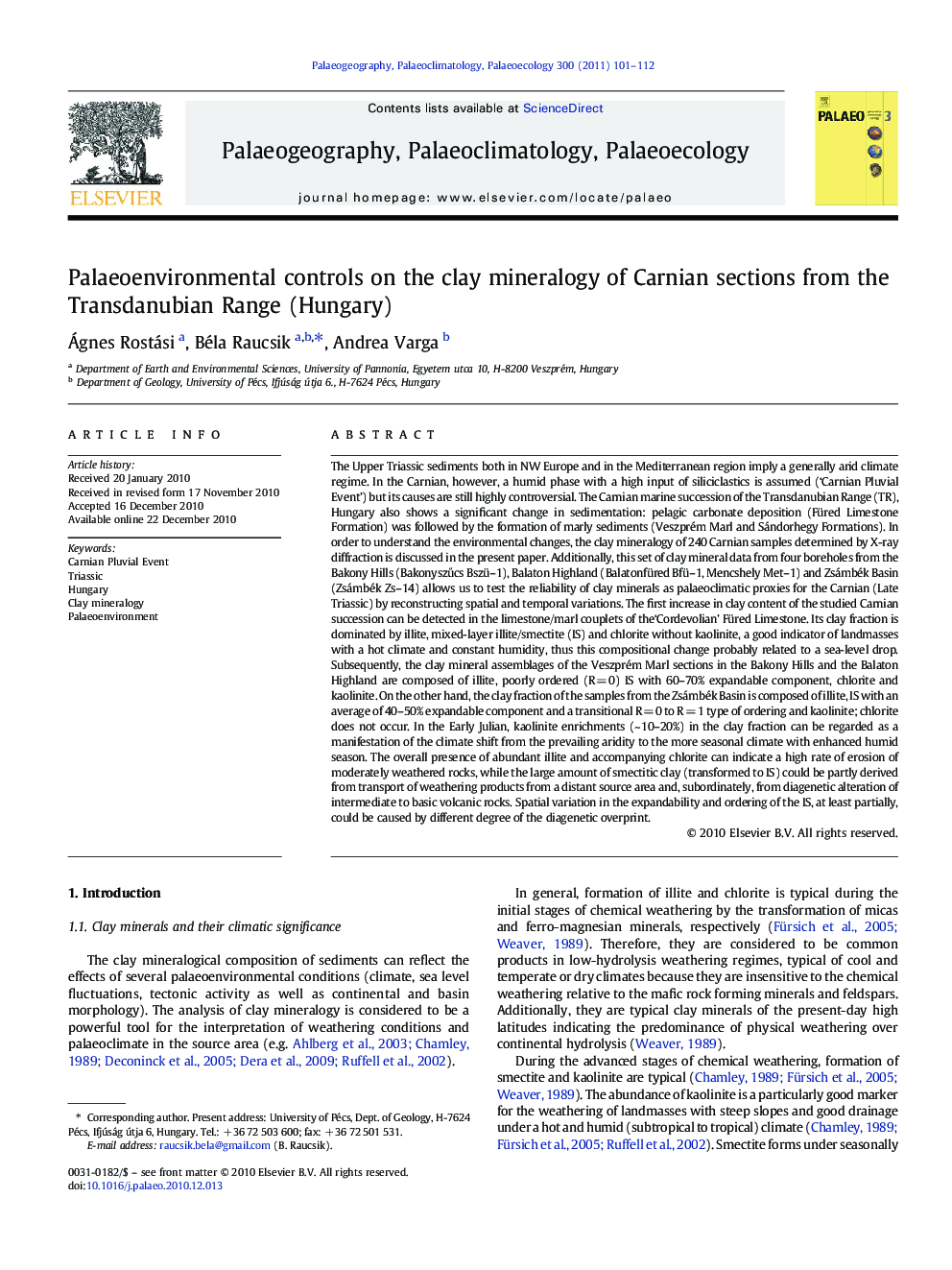| کد مقاله | کد نشریه | سال انتشار | مقاله انگلیسی | نسخه تمام متن |
|---|---|---|---|---|
| 6350633 | 1622263 | 2011 | 12 صفحه PDF | دانلود رایگان |

The Upper Triassic sediments both in NW Europe and in the Mediterranean region imply a generally arid climate regime. In the Carnian, however, a humid phase with a high input of siliciclastics is assumed ('Carnian Pluvial Event') but its causes are still highly controversial. The Carnian marine succession of the Transdanubian Range (TR), Hungary also shows a significant change in sedimentation: pelagic carbonate deposition (Füred Limestone Formation) was followed by the formation of marly sediments (Veszprém Marl and Sándorhegy Formations). In order to understand the environmental changes, the clay mineralogy of 240 Carnian samples determined by X-ray diffraction is discussed in the present paper. Additionally, this set of clay mineral data from four boreholes from the Bakony Hills (Bakonyszűcs Bszü-1), Balaton Highland (Balatonfüred Bfü-1, Mencshely Met-1) and Zsámbék Basin (Zsámbék Zs-14) allows us to test the reliability of clay minerals as palaeoclimatic proxies for the Carnian (Late Triassic) by reconstructing spatial and temporal variations. The first increase in clay content of the studied Carnian succession can be detected in the limestone/marl couplets of the'Cordevolian' Füred Limestone. Its clay fraction is dominated by illite, mixed-layer illite/smectite (IS) and chlorite without kaolinite, a good indicator of landmasses with a hot climate and constant humidity, thus this compositional change probably related to a sea-level drop. Subsequently, the clay mineral assemblages of the Veszprém Marl sections in the Bakony Hills and the Balaton Highland are composed of illite, poorly ordered (R = 0) IS with 60-70% expandable component, chlorite and kaolinite. On the other hand, the clay fraction of the samples from the Zsámbék Basin is composed of illite, IS with an average of 40-50% expandable component and a transitional R = 0 to R = 1 type of ordering and kaolinite; chlorite does not occur. In the Early Julian, kaolinite enrichments (~ 10-20%) in the clay fraction can be regarded as a manifestation of the climate shift from the prevailing aridity to the more seasonal climate with enhanced humid season. The overall presence of abundant illite and accompanying chlorite can indicate a high rate of erosion of moderately weathered rocks, while the large amount of smectitic clay (transformed to IS) could be partly derived from transport of weathering products from a distant source area and, subordinately, from diagenetic alteration of intermediate to basic volcanic rocks. Spatial variation in the expandability and ordering of the IS, at least partially, could be caused by different degree of the diagenetic overprint.
Journal: Palaeogeography, Palaeoclimatology, Palaeoecology - Volume 300, Issues 1â4, 1 February 2011, Pages 101-112